This post was earlier cross-posted at Leonid Schneider's site, hence the unfrivolous tone. The version there is improved by Leonid's editing, background details and frame-story. It is a sequel (or possibly prequel) to an earlier post.
The "Curate's Egg" joke has earned itself a special place in the history of integrity in scholarship, due to the outrage and calls for retraction, after the best-known version in a 1895 Punch turned out to have been plagiarised from a slightly earlier cartoon in a rival magazine. Not really true about the 'outrage', though please appreciate this Twiddle account, devoted to Victorian humour (the Golden Age of Dad Jokes). Here the yolk is the naive suggestion that in a homogeneous unitary product, only part might be decayed, leaving the remaining material perfectly palatable and reliable.


It may seem a stretch to get from there to Professor Gaetano Cairo's participation in PubPeer comment threads, where he has defended a half-dozen papers against criticism and hostile questioning. We should all admire his involvement, by the way, and hope that it inspires other researchers to do the same. But it is not really such a jump, for Cairo's courteous responses capture some of the curate's polyglossian positivity ('Polyglossian' is a portmanteau word I invented just now by combining 'Pangloss' with 'Pollyanna'). Their general theme is that one or two Figure components might have been taken by error from another context, or slightly fabricated by persons unknown, but the other results are above suspicion so the main conclusions of each paper remain unaltered.
For instance, "Loss of the von Hippel Lindau tumor suppressor disrupts iron homeostasis in renal carcinoma cells" (Alberghini et al. 2005) [5]. Here the objects of apologia are two loading controls (congratulations to those of you who had "Loading Control Library" in your Bingo cards!).

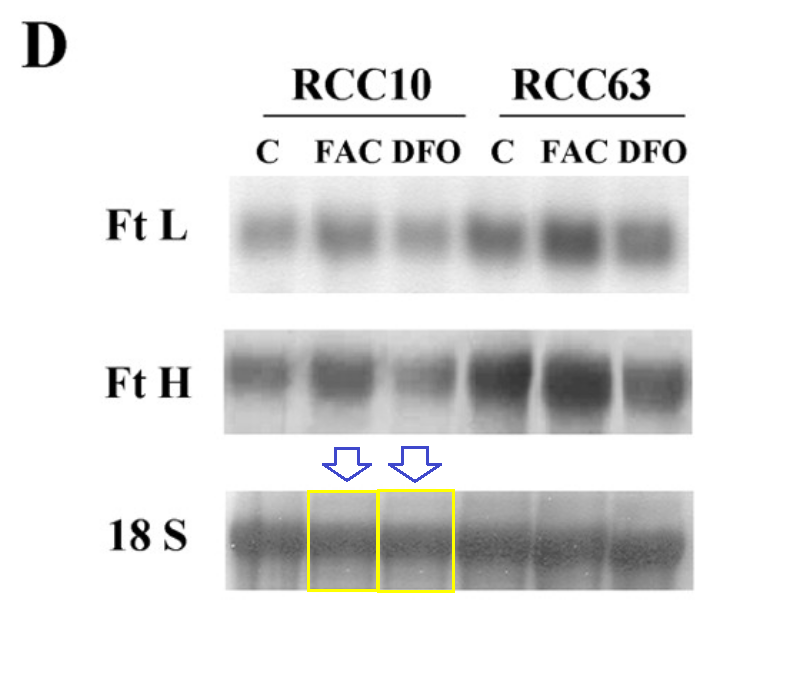
[Thx 'Xanthorrhoea Gracilis']
Murmuring 'Zoom... Enhance' like Deckard in Bladerunner, we tweak the contrast and find that the former control is an exercise in the artistic medium of decoupage.
Thank you for this remark. I would like to respectfully remark that the spot circled in red is invisible and the actin band in the yellow box would appear neatly cut if duplicated as suggested, whereas it appears rounded. The 18S are similar but also not so different from those in the adjacent lanes. Anyway, almost fifteen years after publication, the original films are no longer retrievable and thus it’s unfortunately impossible for us to evaluate them. We would like to remark that the potential image duplication, though inappropriate, does not affect the main results and conclusions of this work. In fact, the figures report a complementary experiment showing the well-known opposite regulation of IRPs and ferritins by iron and iron chelators.Example (2) comes from "Doxorubicin paradoxically protects cardiomyocytes against iron-mediated toxicity" (Corna et al. 2004) [4]. To the casual eye, two or even three of the four loading-control lanes in Fig 3A are clones, with a few percentage variation in width, as can happen with identical triplets.

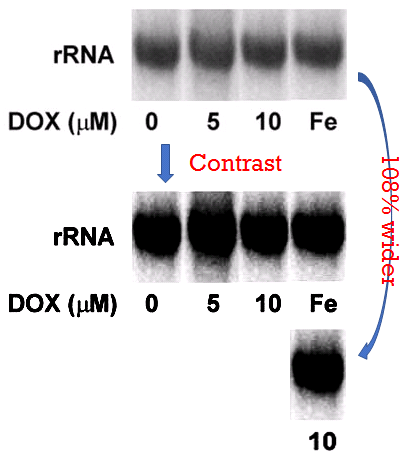
Thank you for this remark. The bands are very similar but also not so different from those in the adjacent lanes. It is actually hard for us to agree or disagree by inspection that the rRNA images were duplicated, as commented by Xanthorrhoea Gracilis. The paper is 15 years old and therefore, unfortunately, it’s impossible for us to retrieve and evaluate the original images of the ethidium bromide-stained rRNA bands used for this figure. In case of inadvertent error, we sincerely apologize, but we would like to remark that the hypothetical use of the same image for two different lanes, though inappropriate, does not affect the results and conclusions of this work.The mystery was deepened by the emergence of the same rRNA band in Fig 3B of "Reactive oxygen species-independent apoptosis in doxorubicin-treated H9c2 cardiomyocytes" (Bernuzzi et al. 2009) [11] -- vertically compressed, and controlling across a quite different range of conditions.
If arguendo we accept that the loading controls were assembled by cloning lanes within bands taken from elsewhere, then two corollaries follow: First, the lanes were not controlled against unintended fluctuations in the concentrations and quantities of lysate from each experimental condition. Second, whoever in the research team made up evidence to secure the desired outcome, what are the odds that they stopped after just one clue?
Crucially, the mystery manipulators may not have confined themselves to control bands. Go back to our first Instance of a problematic loading band, from Fig 4A of [5], which controlled across smeary clouds of Ft L protein (below, left). We have just met the same cloud-bank in [11], though flipped through 180°, recut in the manner of a purloined gemstone from six
Other examples of repurposed bands can be found in this body of work... enough to start one wondering whether there was a single lab member in charge of pulling random blots out of the image archive when assembling a Figure, or did they share the task around on a roster? This next control appears twice in "Adenosine A(2)A receptor but not HIF-1 mediates Tyrosine hydroxylase induction in hypoxic PC12 cells" (Gammella, Cairo & Tacchini 2010) [12], as TFIID and as β-actin; in the latter manifestation it could easily be an X-ray of my index finger.
Another phalanx-bone had previously come to light in "Role of HIF-1 and NF-kappaB transcription factors in the modulation of transferrin receptor by inflammatory and anti-inflammatory signals" (Tacchini et al. 2008) [9].
[9] leads us to [8] and [13], "Adenosine A2a receptor-mediated, normoxic induction of HIF-1 through PKC and PI-3K-dependent pathways in macrophages" (De Ponti et al. 2007) and "Role of hypoxia-inducible factors in the dexrazoxane-mediated protection of cardiomyocytes from doxorubicin-induced toxicity" (Spagnuolo et al. 2011) -- the three papers being tightly intertwined despite their diverse topics. At left, [9] and [8] share a loading control which resembles a row of burning canoes.
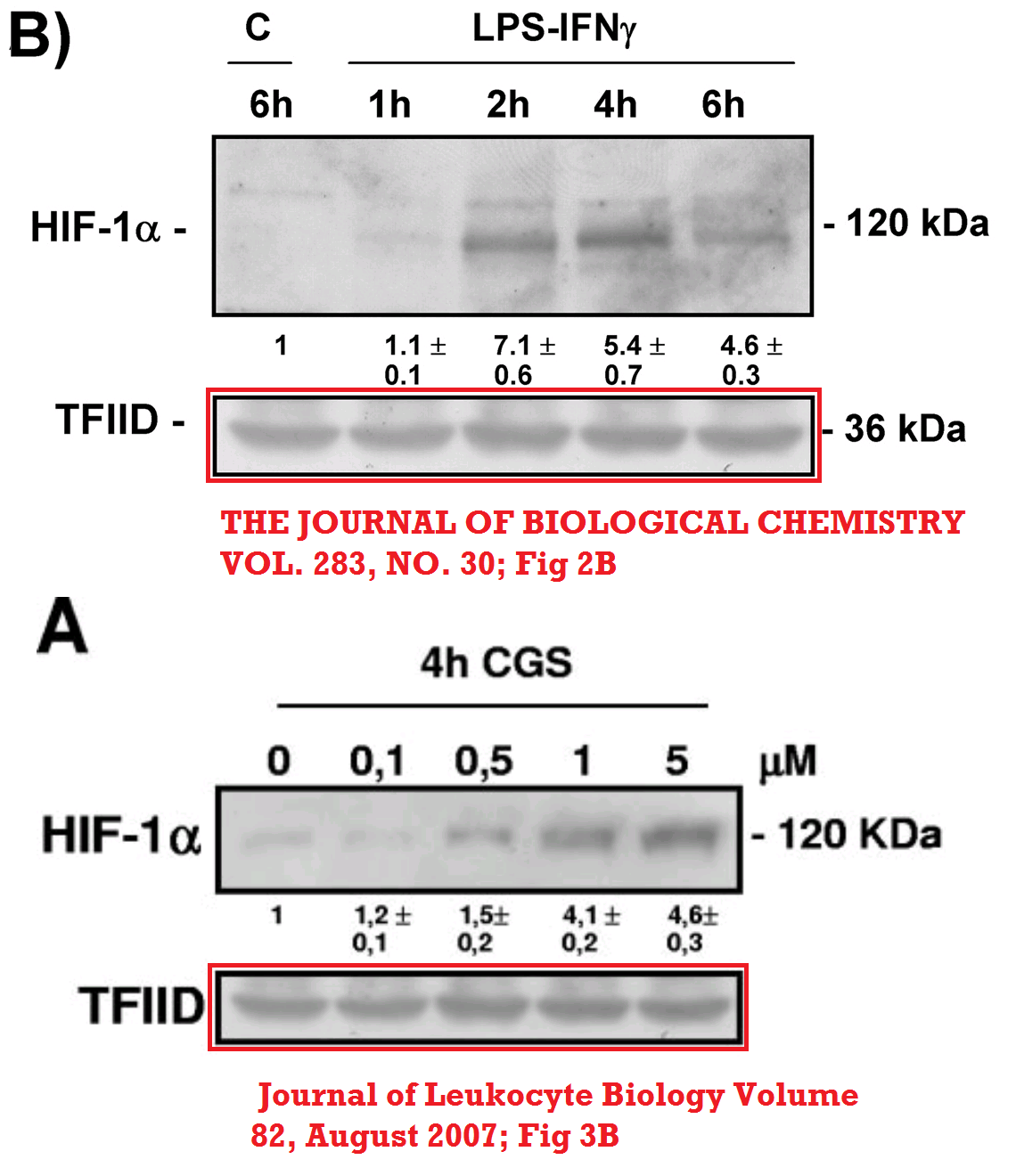
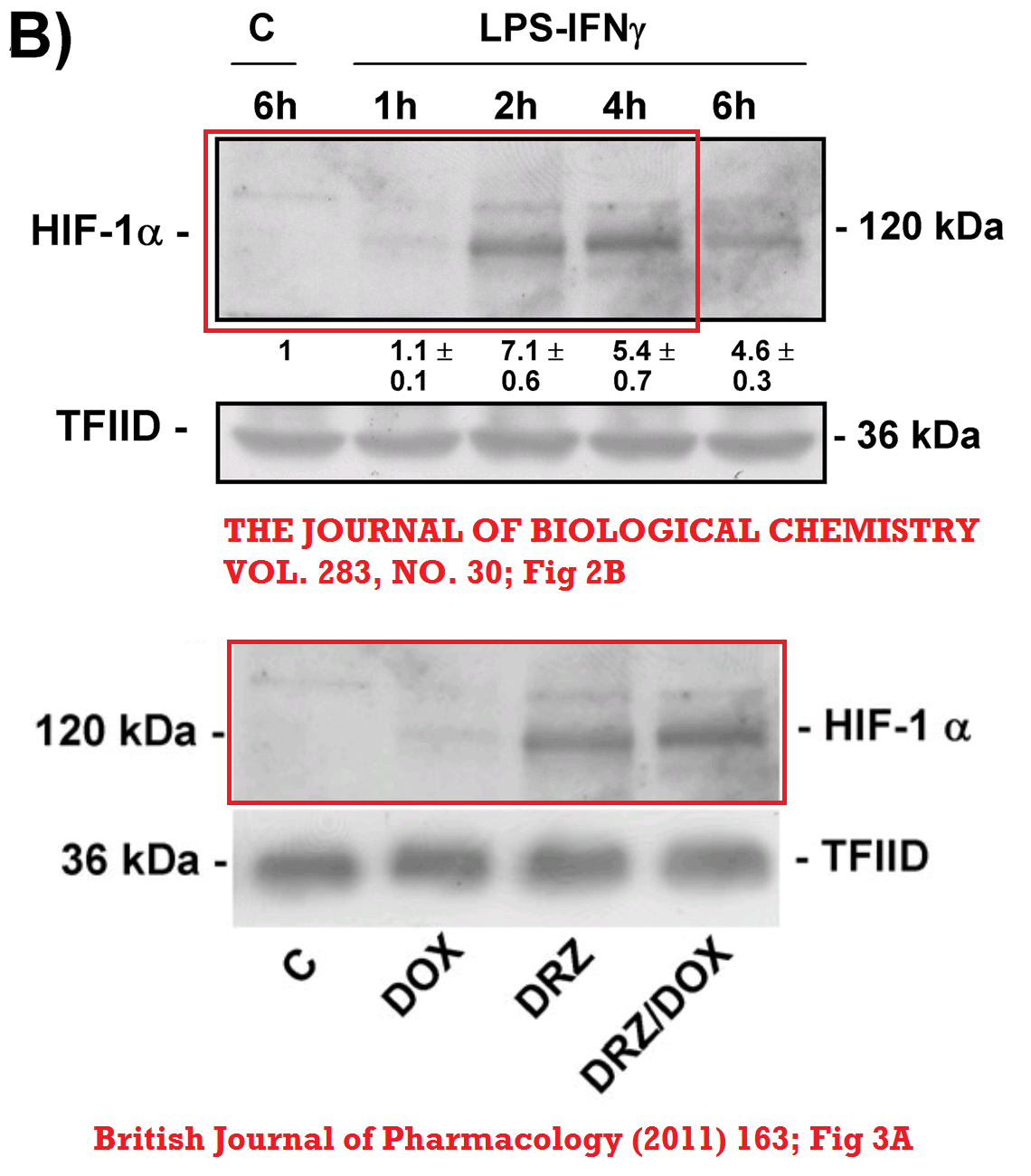
In [9] the canoes are matched to a scene of full-rigged ships-of-the-line emerging through cannon smoke, in a little-known naval engagement from the Napoleonic Wars (above, right). In [13] the ships change their lane labels and lose one of their number, but acquire a new TFIID chaperone.
In less nautical imagery, two HIF-1 bands from Fig 1D of [8] and 1(a) of [13] are surprisingly similar after a horizontal flip:
Seriously, how does all this happen? We must consider the possibility that Prof. Cairo had only limited oversight of what was going on in the laboratory at the time of these papers.
Anyway, I haven't finished with [8]. Its Figures 6A and 7A feature a pair of Forensic Dental X-ray images, shared with Fig 5B of "Up regulation of IL-6 by ischemic preconditioning in normal and fatty rat livers" (Tacchini et al. 2006) [6]. One of those dental records is hard-working: it leads us back to 2010, with 3D of [12] (the neighbourhood of the phalangeal X-ray).
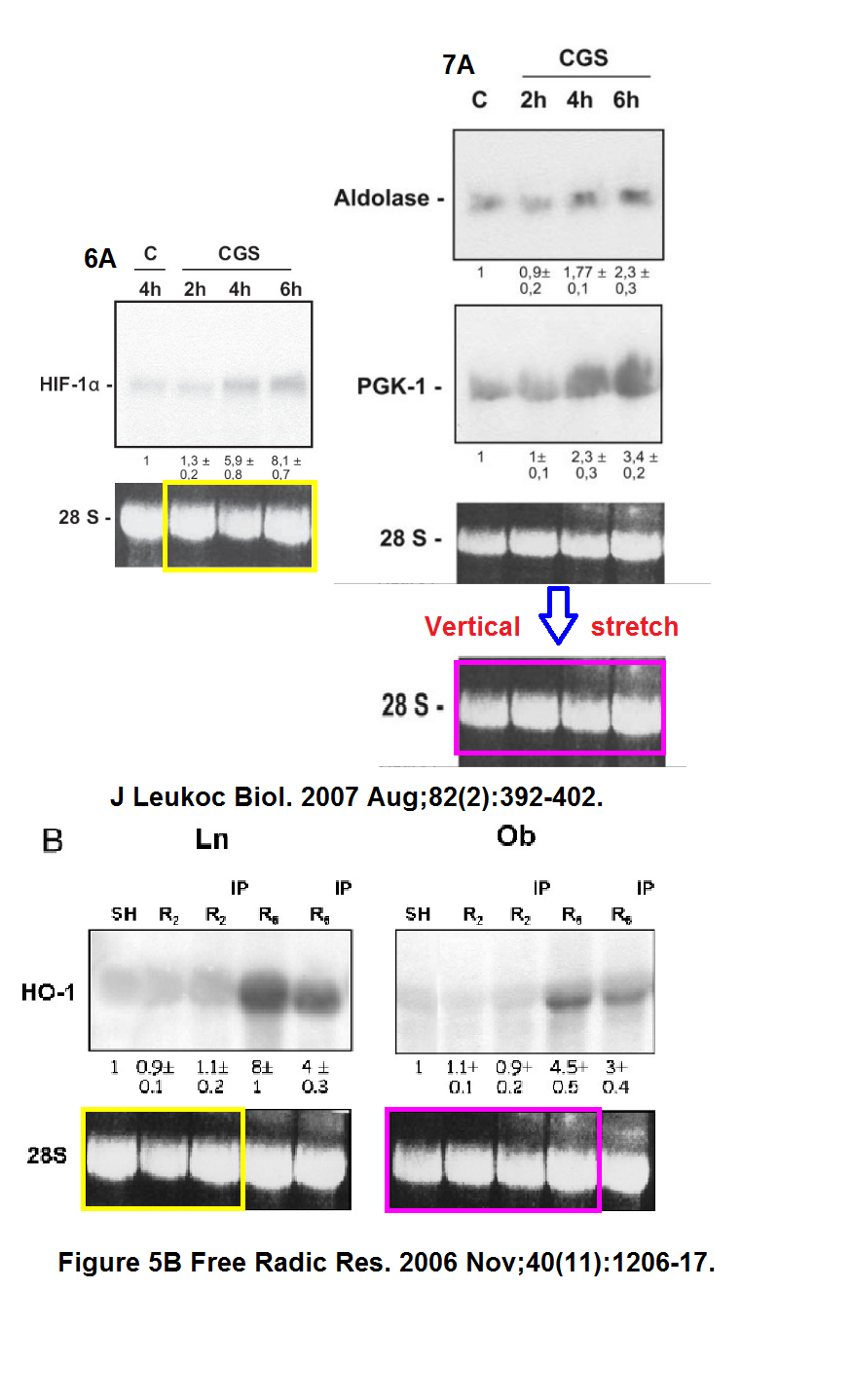

[6] rewards further attention. Within its Fig 5A, two "Oct-1" loading controls from Fig 2A are easily mistaken for a row of cat emojis, and cancel out surprisingly well when superimposed.
Their resemblance inspired 'Maianthemum Lichiangense' to draw four papers together into one diagram: Figs 1B from [8], 5A from [6], 2a from [9] and 3 from "Adenosine‐dependent activation of hypoxia‐inducible factor‐1 induces late preconditioning in liver cells" (Alchera et al. 2008) [10].
As the end of this post approaches, I belatedly realise that I never set out its purpose -- of providing some context for an earlier post. That one looked at the oeuvre of Prof. Alfonsina Desiderio, also of Milan University. This is either a sequel or a prequel. As Leonid noted in his Introduction to that post, there are historical links between the two research groups. It is not for me to wonder whether they speak of a broader research-culture malaise within Milan University.
There are also pictorial connections. For instance, this one, involving Figs 3(a) of "IRP1-independent alterations of cardiac iron metabolism in doxorubicin-treated mice" (Corna et al. 2006) [7] and 2C in a 2004 paper from Desiderio's group:
[Thx Pandanus Comatus]
Thank you for this remark. In reply to comments to a few other old papers I did not argue because the original data were no longer available for evaluation. However, in this case the comment of Pandanus Comatus about 18S RNA seems inappropriate because it regards two independent papers with no authors in common. I cannot see how the original image could have been duplicated.It may be that a second image, shared between the respective Figs 2B and 3(a), is more convincing.
Finally, 'Macaranga Lowii' put together another sprawling diagram calling attention to similarities among a series of blots. The implication is that an original 10-lane band of S28 ribosomal RNA had been cut to various widths depending on the number of conditions retrospectively needing a loading control in each experiment.
Three of the five papers are currently relevant, though old enough to interest only historians... At the bottom of the chart is 'HIF-1-mediated activation of transferrin receptor gene transcription by iron chelation' (Bianchi, Tacchini & Cairo, 1999) [1]. At left, "Transferrin receptor induction by hypoxia" (Tacchini et al. 1999) [2]. At lower left, "Oxidative stress-mediated down-regulation of rat hydroxyacid oxidase 1" (Recalcati et al. 2003) [3]. There is some authorship overlap with the 2001 and 2002 papers from Desiderio's early work.
Conceding the possibility that a single band might have used more than once by mistake for loading-control purposes, Professor Cairo has pointed out that the lack of distinctiveness in the shapes of these Magritte-bilboquet blobs makes it difficult to be sure. Consulting the original data is impossible, given the largely antiquarian nature of these papers.
It is actually possible that we inadvertently duplicated the rRNA images, as commented by Streptomyces Avellaneus, though all these rRNA bands look alike. The J Biol Chem paper is 20 years old and the experiments were performed 1-2 years earlier, before the digital images era. Therefore, unfortunately, it’s impossible for us to retrieve and evaluate the original images of the ethidium bromide-stained rRNA bands used for this figure.I agree that some of the proposed identities in the chart may be false positives, mistaken identities, But my general conclusions remain unaltered.
Sources:
[1]. "HIF-1-mediated activation of transferrin receptor gene transcription by iron chelation".
L. Bianchi, L. Tacchini, G. Cairo, Nucleic Acids Research (1999) doi: 10.1093/nar/27.21.4223 [PubPeer]
[2]. "Transferrin receptor induction by hypoxia. HIF-1-mediated transcriptional activation and cell-specific post-transcriptional regulation".
Lorenza Tacchini, Laura Bianchi, Aldo Bernelli-Zazzera, Gaetano Cairo, Journal of biological chemistry (1999) 10.1074/jbc.274.34.24142 [PubPeer]
[3]. "Oxidative stress-mediated down-regulation of rat hydroxyacid oxidase 1, a liver-specific peroxisomal enzyme"
Stefania Recalcati, Lorenza Tacchini, Alessandra Alberghini, Dario Conte, Gaetano Cairo, Hepatology (2003) doi: 10.1053/jhep.2003.50417 [PubPeer]
[4]. "Doxorubicin paradoxically protects cardiomyocytes against iron-mediated toxicity: role of reactive oxygen species and ferritin".
Gianfranca Corna, Paolo Santambrogio, Giorgio Minotti, Gaetano Cairo, Journal of Biological Chemistry (2004) doi: 10.1074/jbc.m310106200 [PubPeer]
[5]. "Loss of the von Hippel Lindau tumor suppressor disrupts iron homeostasis in renal carcinoma cells".
Alessandra Alberghini, Stefania Recalcati, Lorenza Tacchini, Paolo Santambrogio, Alessandro Campanella, Gaetano Cairo, Journal of Biological Chemistry (2005) doi: 10.1074/jbc.m500971200 [PubPeer].
[6]. "Up regulation of IL-6 by ischemic preconditioning in normal and fatty rat livers: association with reduction of oxidative stress"
Lorenza Tacchini, Lorenza Tacchini, Gaetano Cairo, Lorenza Tacchini, Gaetano Cairo, Cristina De Ponti, Marta Massip, Joan Rosellò-Catafau, Carmen Peralta, Free Radical Research (2006) doi: 10.1080/10715760600885432 [PubPeer]
[7]. "IRP1-independent alterations of cardiac iron metabolism in doxorubicin-treated mice"
Gianfranca Corna, Bruno Galy, Matthias W. Hentze, Gaetano Cairo, Journal of Molecular Medicine (2006) doi: 10.1007/s00109-006-0068-y [PubPeer]
[8]. "Adenosine A2a receptor-mediated, normoxic induction of HIF-1 through PKC and PI-3K-dependent pathways in macrophages".
Cristina De Ponti, Rita Carini, Elisa Alchera, Maria Paola Nitti, Massimo Locati, Emanuele Albano, Gaetano Cairo, Lorenza Tacchini, Journal of Leukocyte Biology (2007) doi: 10.1189/jlb.0107060 [PubPeer]
[9]. "Role of HIF-1 and NF-kappaB transcription factors in the modulation of transferrin receptor by inflammatory and anti-inflammatory signals".
Lorenza Tacchini, Elena Gammella, Cristina De Ponti, Stefania Recalcati, Gaetano Cairo, Journal of Biological Chemistry (2008) doi: 10.1074/jbc.m800365200 [PubPeer]
[10]. "Adenosine‐dependent activation of hypoxia‐inducible factor‐1 induces late preconditioning in liver cells".
Elisa Alchera, Lorenza Tacchini, Chiara Imarisio, Caterina Dal Ponte, Cristina De Ponti, Elena Gammella, Gaetano Cairo, Emanuele Albano, Rita Carini, Hepatology (2008) doi: 10.1002/hep.22249 [PubPeer]
[11]. "Reactive oxygen species-independent apoptosis in doxorubicin-treated H9c2 cardiomyocytes: role for heme oxygenase-1 down-modulation".
Francesca Bernuzzi, Stefania Recalcati, Alessandra Alberghini, Gaetano Cairo, Chemico-Biological Interactions (2009) doi: 10.1016/j.cbi.2008.09.012 [PubPeer]
[5]. "Loss of the von Hippel Lindau tumor suppressor disrupts iron homeostasis in renal carcinoma cells".
Alessandra Alberghini, Stefania Recalcati, Lorenza Tacchini, Paolo Santambrogio, Alessandro Campanella, Gaetano Cairo, Journal of Biological Chemistry (2005) doi: 10.1074/jbc.m500971200 [PubPeer].
[6]. "Up regulation of IL-6 by ischemic preconditioning in normal and fatty rat livers: association with reduction of oxidative stress"
Lorenza Tacchini, Lorenza Tacchini, Gaetano Cairo, Lorenza Tacchini, Gaetano Cairo, Cristina De Ponti, Marta Massip, Joan Rosellò-Catafau, Carmen Peralta, Free Radical Research (2006) doi: 10.1080/10715760600885432 [PubPeer]
[7]. "IRP1-independent alterations of cardiac iron metabolism in doxorubicin-treated mice"
Gianfranca Corna, Bruno Galy, Matthias W. Hentze, Gaetano Cairo, Journal of Molecular Medicine (2006) doi: 10.1007/s00109-006-0068-y [PubPeer]
Cristina De Ponti, Rita Carini, Elisa Alchera, Maria Paola Nitti, Massimo Locati, Emanuele Albano, Gaetano Cairo, Lorenza Tacchini, Journal of Leukocyte Biology (2007) doi: 10.1189/jlb.0107060 [PubPeer]
[9]. "Role of HIF-1 and NF-kappaB transcription factors in the modulation of transferrin receptor by inflammatory and anti-inflammatory signals".
Lorenza Tacchini, Elena Gammella, Cristina De Ponti, Stefania Recalcati, Gaetano Cairo, Journal of Biological Chemistry (2008) doi: 10.1074/jbc.m800365200 [PubPeer]
[10]. "Adenosine‐dependent activation of hypoxia‐inducible factor‐1 induces late preconditioning in liver cells".
Elisa Alchera, Lorenza Tacchini, Chiara Imarisio, Caterina Dal Ponte, Cristina De Ponti, Elena Gammella, Gaetano Cairo, Emanuele Albano, Rita Carini, Hepatology (2008) doi: 10.1002/hep.22249 [PubPeer]
Francesca Bernuzzi, Stefania Recalcati, Alessandra Alberghini, Gaetano Cairo, Chemico-Biological Interactions (2009) doi: 10.1016/j.cbi.2008.09.012 [PubPeer]
[12]. "Adenosine A(2)A receptor but not HIF-1 mediates Tyrosine hydroxylase induction in hypoxic PC12 cells".
Elena Gammella, Gaetano Cairo, Lorenza Tacchini, Journal of Neuroscience Research (2010) doi: 10.1002/jnr.22366 [PubPeer]
[13]. "Role of hypoxia-inducible factors in the dexrazoxane-mediated protection of cardiomyocytes from doxorubicin-induced toxicity"
R D Spagnuolo, S Recalcati, L Tacchini, G Cairo, British Journal of Pharmacology (2011) doi: 10.1111/j.1476-5381.2011.01208.x [PubPeer]

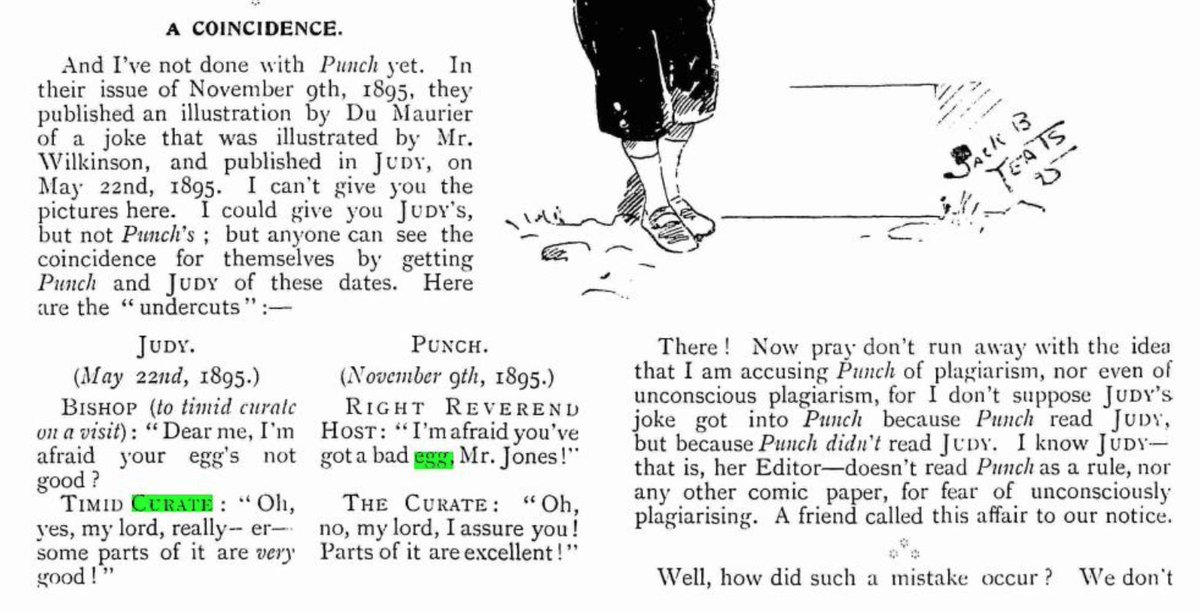

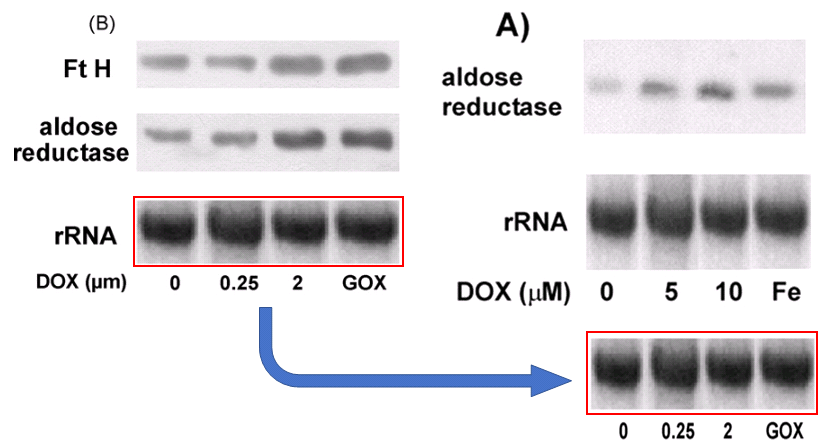

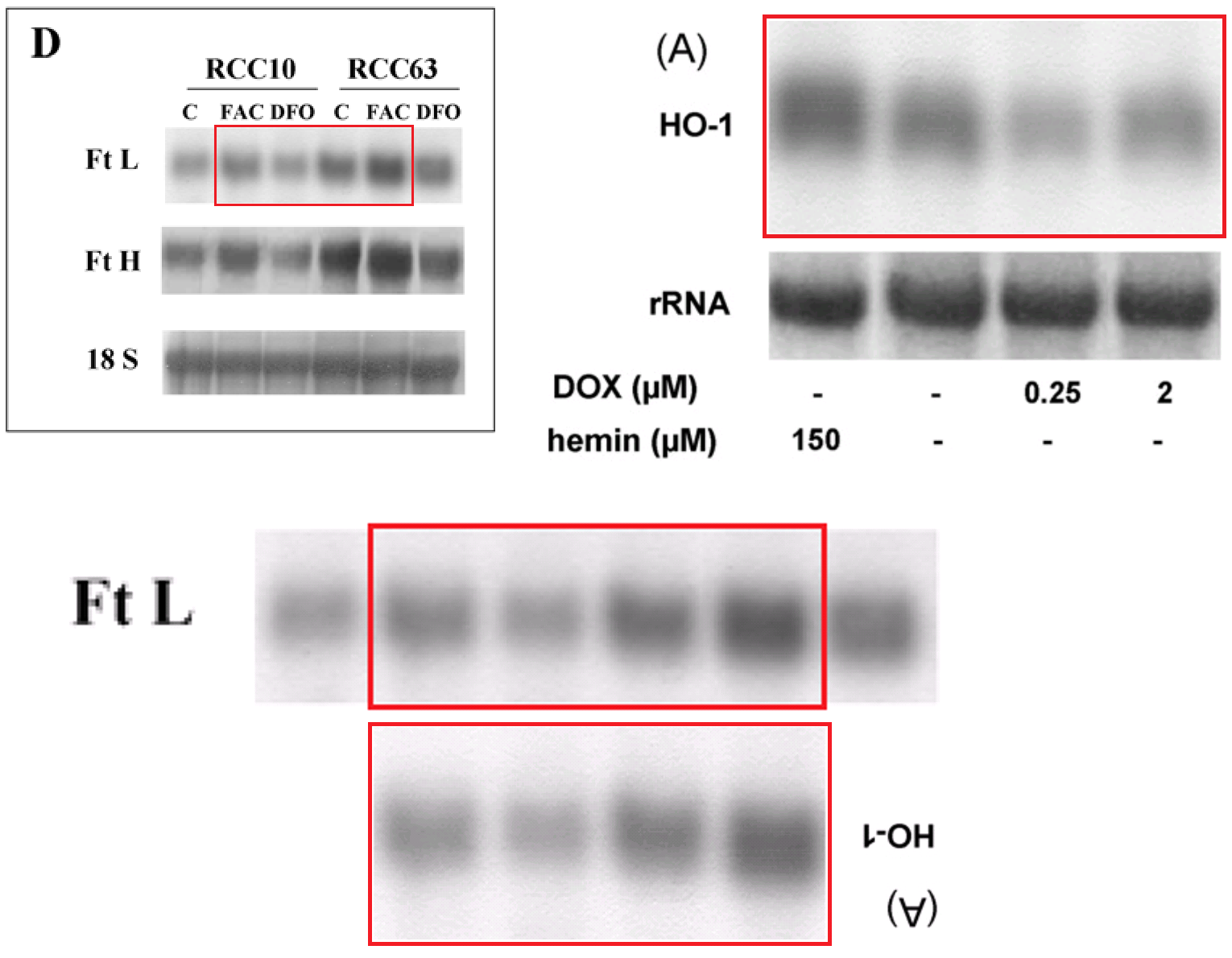

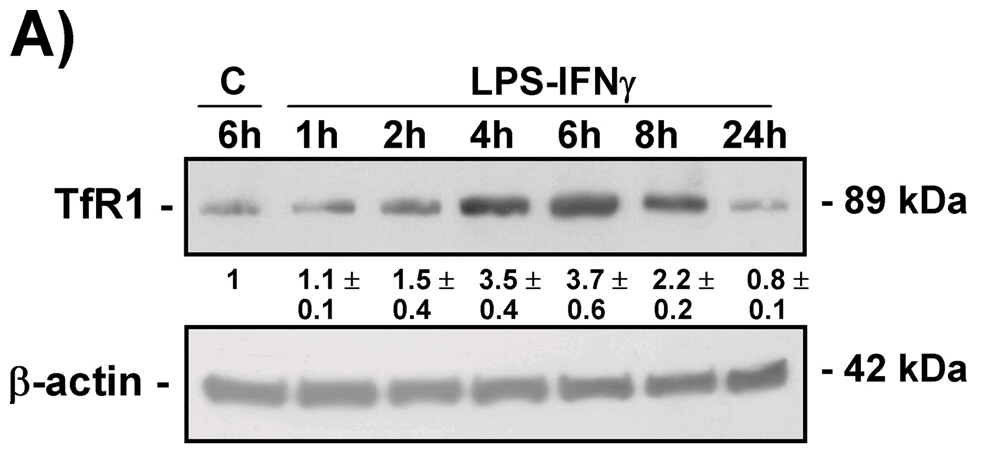



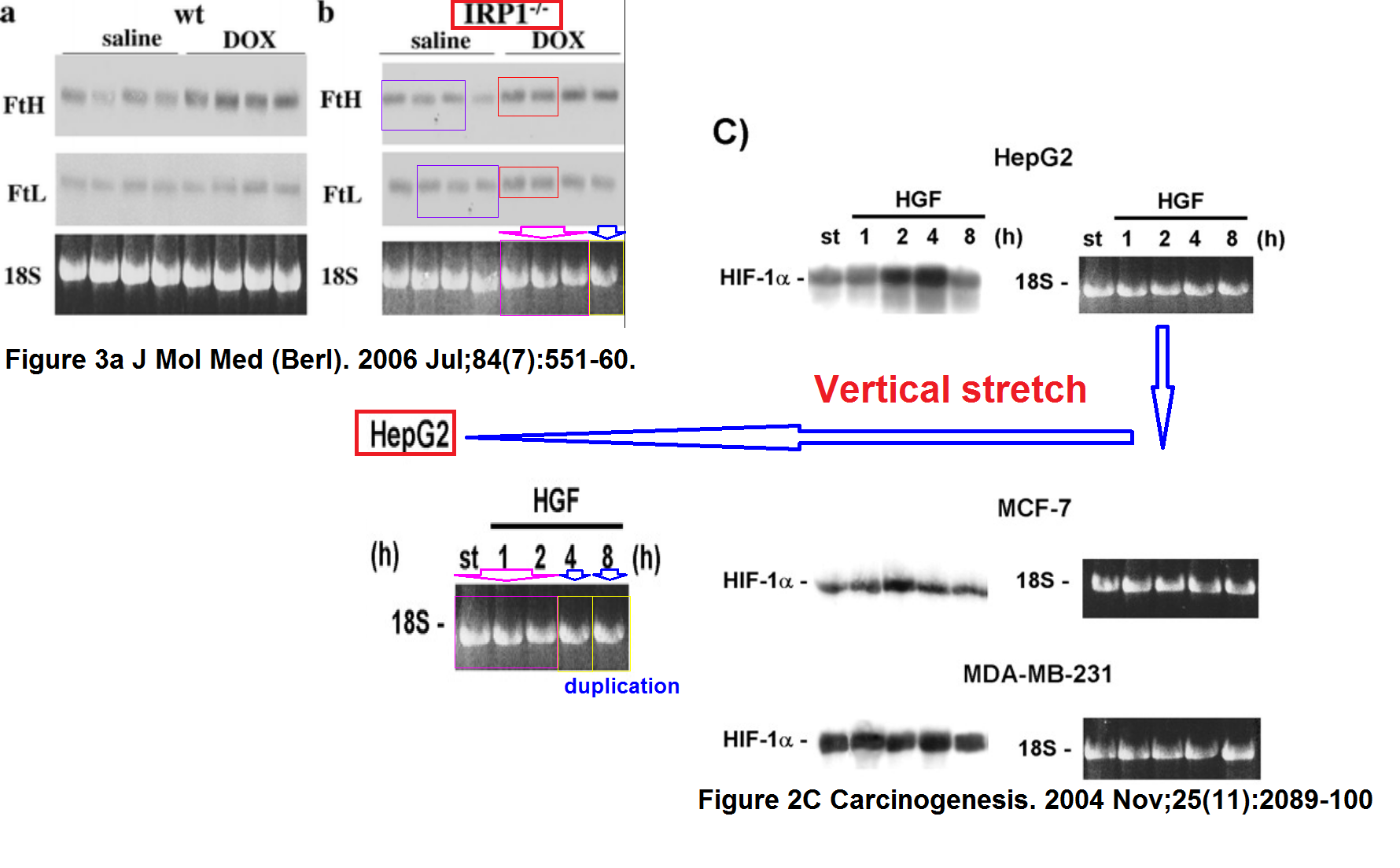
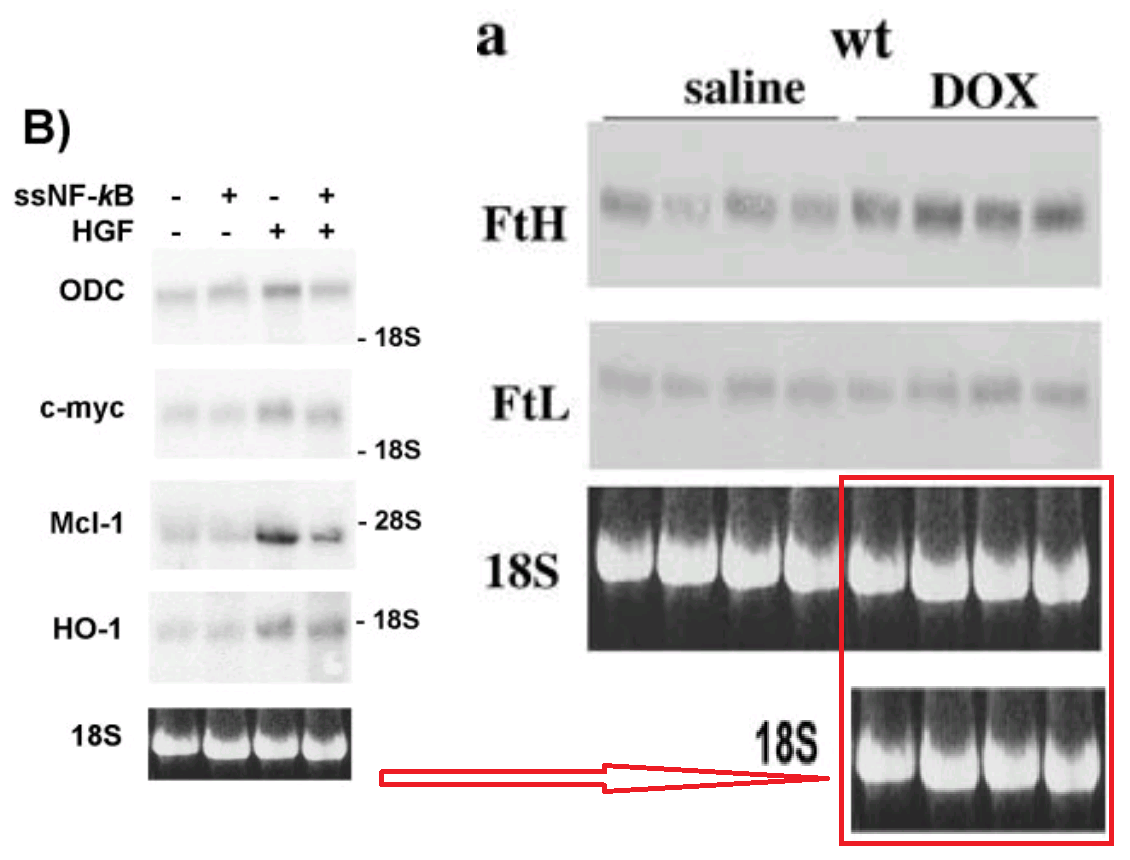
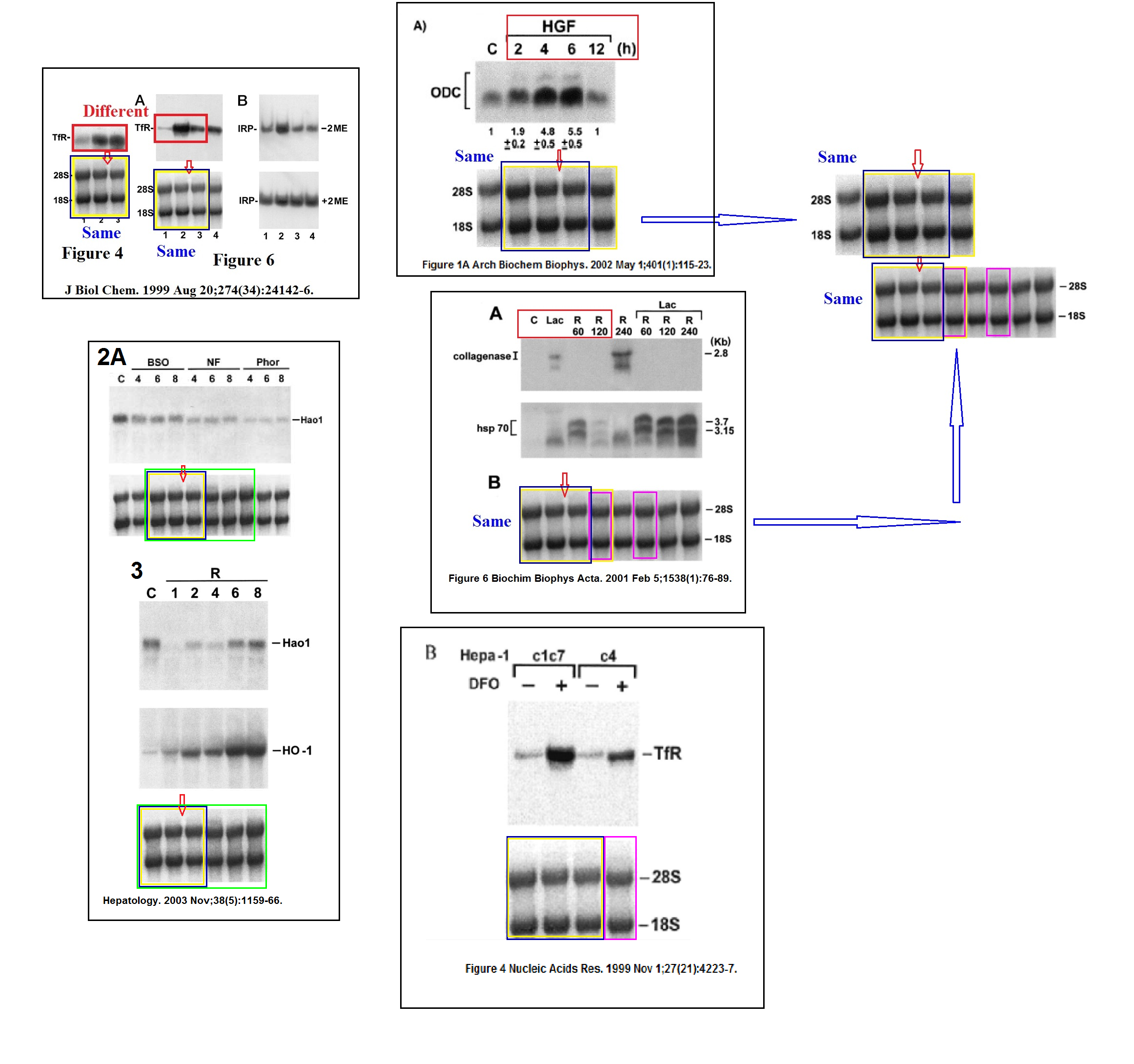

No comments:
Post a Comment